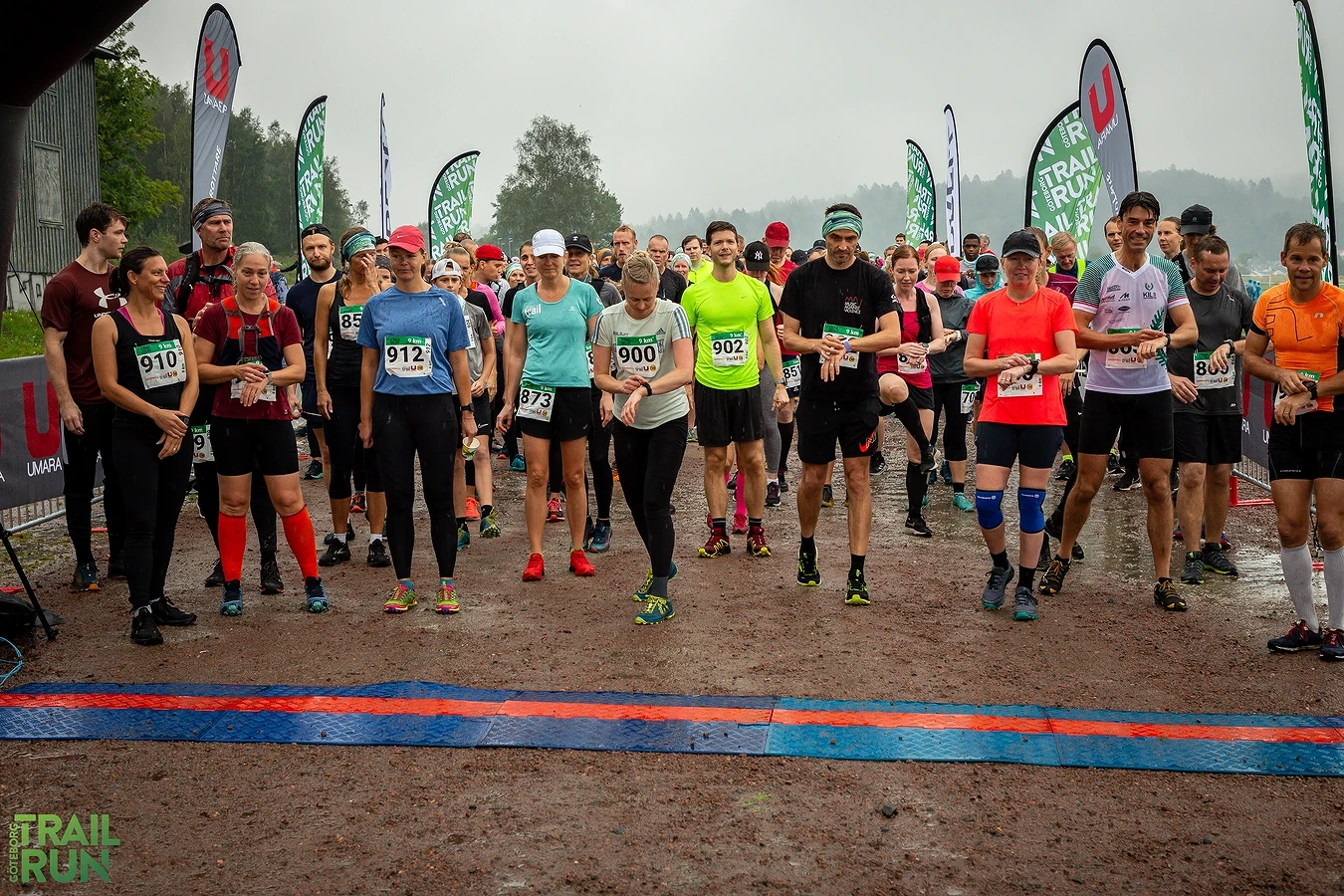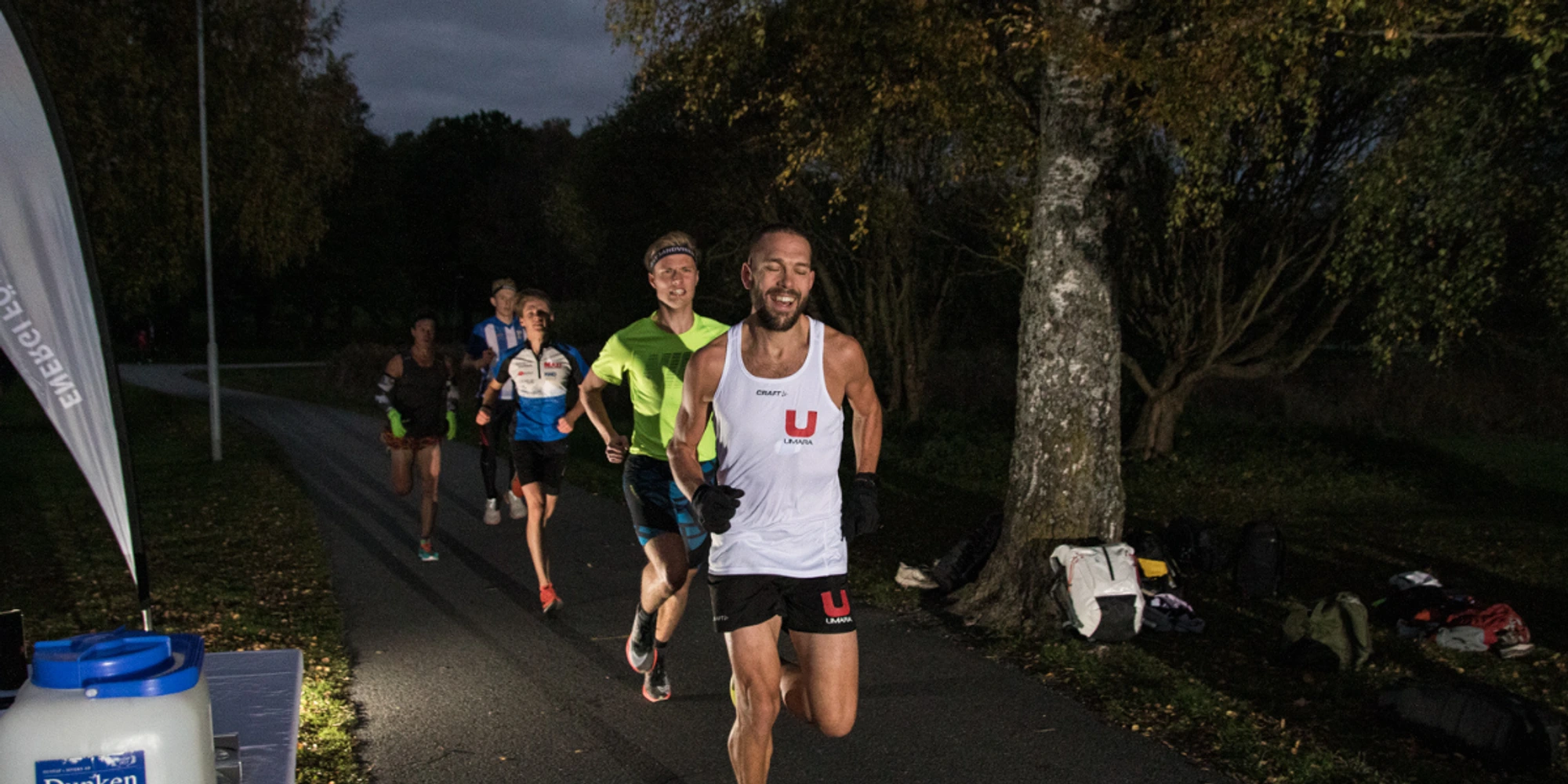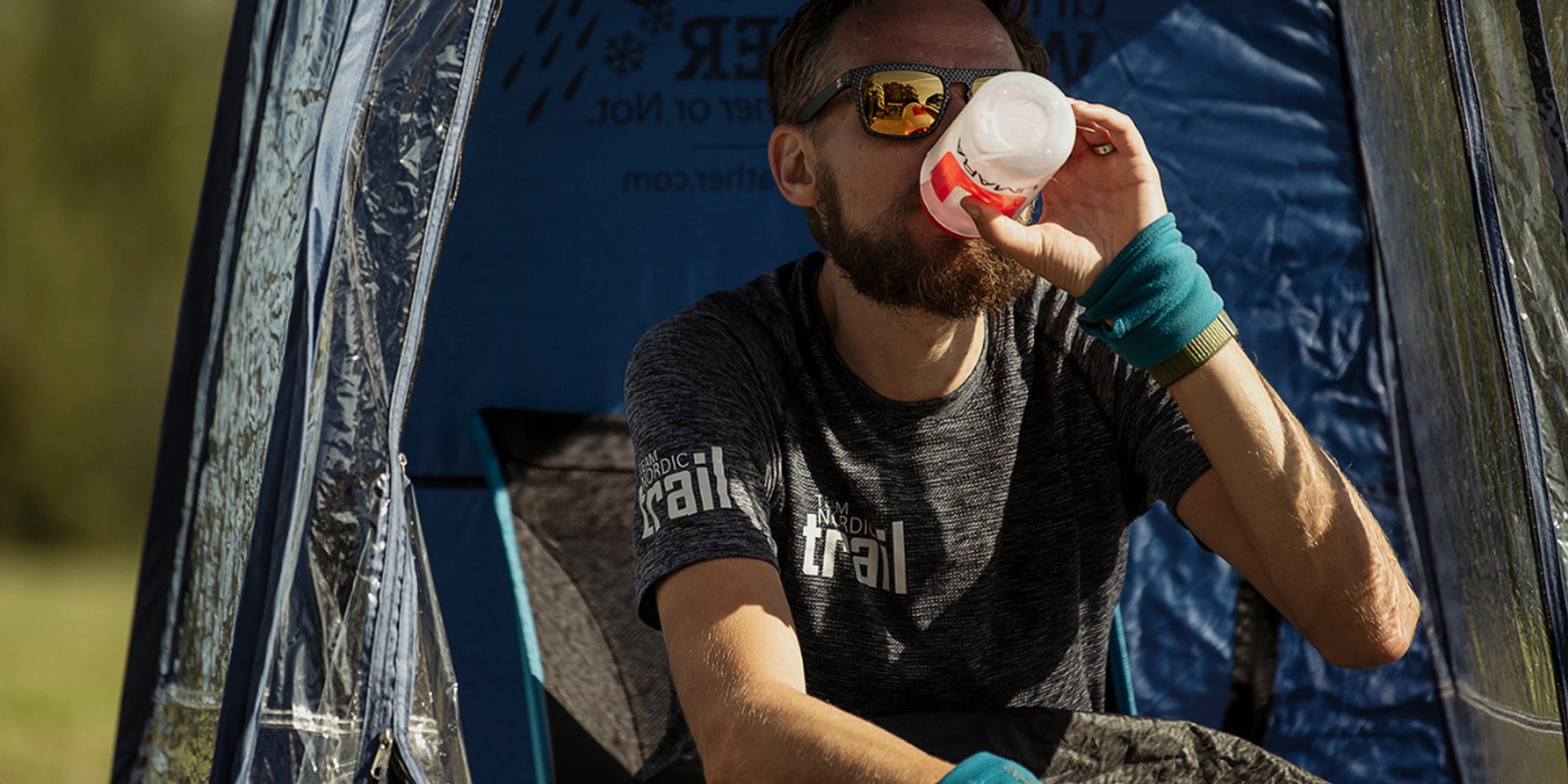
Energy plan for a Backyard Ultra
The competition format Backyard Ultra has seen a massive surge in popularity in recent years. Backyard Ultra is a type of competition where participants must run a lap of 6,706 meters (4.167 miles) as many times as possible. Every hour, a new lap starts. Once a lap is completed, participants can rest until the next start. The race concludes when all runners except for one have given up, or fail to return within the time limit of 60 minutes. The advantage is that for much of the race, you are competing against yourself, your body, and your mind. The fact that anyone can participate regardless of physical ability also contributes to its popularity and atmosphere.
Simple yet so challenging to master. Whether the goal is to complete a marathon, your first ultra, 12 hours, or the magical 24-hour mark that gives the distance of 100 miles, a good strategy for both equipment and energy intake is required. In this article, we will go through how to set up your energy plan for a Backyard Ultra.
Specific Requirements Profile
A Backyard Ultra has both pros and cons when it comes to creating an energy plan. It is simple in the sense that you return to the same spot every hour, so you never need to carry much with you, nor plan for different drop bags. At the lap zone, you can have your base camp with everything you might need. What makes it difficult, however, is that you do not know how far you will run. The longer you keep going, the higher the demands on both equipment and energy intake.
If we look at the physiological demands, they are very similar to other ultra races in the sense that the intensity is relatively low for a large part of the time. Instead, it is endurance, durability (muscular/ligament), and the mental aspect that sets the limit. Most people can run the 6.7 km in just under 60 minutes, which gives many 5-15 minutes of rest per lap. This provides a break that can be utilized for rest, energy intake, body care, and in some extreme cases, even a power nap, unlike “regular” ultra races.

Energy Plan
That you should consume about 90-100g of carbohydrates per hour for optimal performance is something we try to instill in all endurance enthusiasts. So in this case as well, the goal is to take you as far as possible in a backyard event, and the focus should be on carbohydrate intake.
90g/h of sports drink or gels from start to finish is the basic plan we start from. Some laps you might manage 110g while others only 50g, but the plan remains. You can spread carbohydrate intake throughout the entire lap, but be sure to consume a slightly larger portion right before the lap ends. This allows your body to take care of the intake during "rest" while you sit still. Anything under 24 hours is considered "short-distance" and primarily requires a focus on carbohydrates. However, you will run through certain "meal patterns" such as lunch and dinner, and hunger may creep up on you. Keep in mind here not to give in too much and indulge in pasta, pizza, etc. Too much solid food with high fat and fiber content increases the risk of your stomach "going off." Nonetheless, it can occasionally be nice to have something to chew on. A bar, a pastry, fruit, or a light sandwich can then do the job. But keep these intakes to every 3-4 hours.
If you know that you are aiming for +24 hours and perhaps even approaching 48 hours or even longer, there are a few more considerations for your energy plan. It then becomes increasingly important for you to get in a bit more protein and fat, as well as not letting the calorie deficit become too large. For actually long events, Prestera Mera has a good article that you can dive into, read it here.
Most recently at the World Championships in Backyard Ultra in Älvdalen, it was Tobbe Gyllenbring who went the furthest among Swedes with a total of 57 laps, i.e. 57 hours. Incredibly impressive! We asked Tobbe to share his energy plan to show how the professionals do it.

Every 4th lap, so 6 times per day, the sports drink was replaced with a nutritional drink, in my case Fortimel 250ml, which provides 30g of carbohydrates + 8-18g of protein and is a complete "meal". I have previously (24h Swedish Championships + European Championships) used sports drink + whey protein or whey protein + gel
on the same clock and amount. But it's a bit less messy with pre-mixed small bottles.
The two foundations, 2 gels and Fortimel, were used in every lap with one single exception and that was that I skipped the last gel on the last lap. The filling could fluctuate a bit up and down and on some laps, we broke the flavor with soda, Indian Tonic, but approximately the same amount of liquid, and on certain laps when my stomach was cooperating, we topped up more than planned. Thirst and status simply had to guide in 3 out of 4 lap changes.
As for the effort, the data shows that I had an average heart rate of 120 (~60%) throughout the race. A maximum of 155, and I would say a good estimate for "average in movement" would be around 135 (~69%).
The lap times averaged 44:56 (fastest 41:59) so that is the active "work" per lap plus a few minutes of downtime to grab energy and get down from sleep/rest/start. After a few laps, the energy intakes happened at the same places, which was a little hill right by the 1km point, roughly 6-6:30 into the lap and then the last uphill towards the finish after 35-39 minutes and then directly at the lap change.
If the gels for the lap were of different sizes (usually, like a 20g and a 30g squeeze) the larger one was consumed first. The prioritization for caffeine gels was the same; they were taken first on the lap.
I have exactly zero secrets about this, and the setup is pretty much a result of leaning on Simon and Tommy's recurring reasoning about counting units where the base here becomes "2 units" with the ambition of an additional one from the sports/nutritional drink.
Not always "reaching the goal" is really not something I see as a problem; yes, I am notoriously bad at getting my stomach to handle a lot of energy, but since the effort level is so low, I still believe I'm relatively on point.
I can add that I had good energy throughout, felt very clear-headed, and at times it almost felt like I was cheating my way through this. So the setup as a whole gets the highest rating from me. Physiologically, I went into it with a slightly poor starting position and I got early sensations from my European Championship knees. But otherwise, I had an unreasonably pleasant journey and have had a very good recovery in the days following as well.
After crossing the finish line, I pushed four nutritional drinks before bedtime, and the day after, there was a lot of focus on essentially replenishing energy levels with liters of sports drinks.”
Thank you, Tobbe, and congratulations on an incredible achievement!
